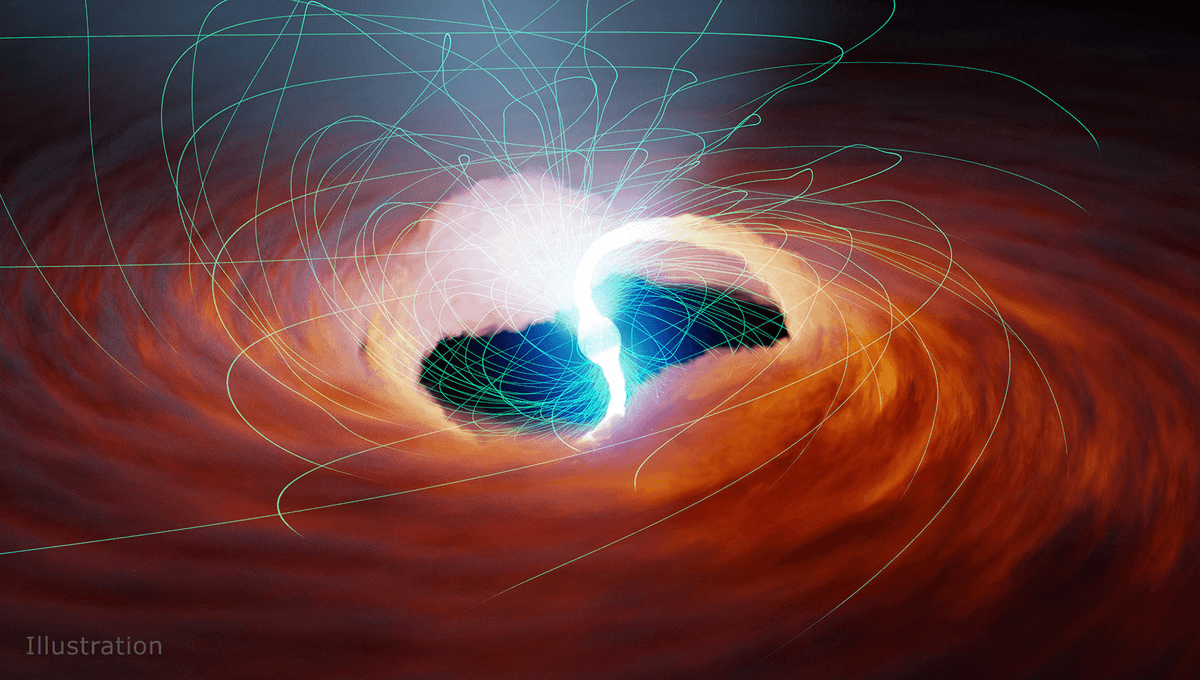
A pulsar 12 million light years away has been confirmed as being brighter than our standing laws of physics allow. A new paper provides evidence that its magnetic field is so powerful that it is turning atoms into long threads, allowing it to achieve otherwise impossible levels of brightness.
In 1924, astronomer Arthur Eddington proposed a limit on how bright a star could be relative to its mass without collapsing or tearing itself apart. Known as the Eddington Limit, this has been modified somewhat but generally stood the test of time.
The discovery of M82 X-2 and several subsequent pulsing ultra-luminous X-ray sources represents a challenge to the Eddington limit. These objects appear to emit hundreds of times more electromagnetic radiation than their masses should allow. The new paper proves the problem is real, and offers a tentative explanation.
M82 X-2 gets its name from the M82 galaxy in which it lies. Although known to be an X-ray source previously, it was only when supernova SN2014J exploded in the same galaxy that teams observing that event noticed how bright the pulsations from M82 X-2 are in the X-ray spectrum.
Pulsars, like all neutron stars, have a narrow range of masses, and the Eddington limit puts a ceiling on how much energy such an object can release. Yet M82 X-2 sometimes appears to pulse between 100 and 500 times brighter than this, while still coming back for more. Initially, it was thought M82 X-2 might instead be a black hole, whose much greater mass could support such brightness, but this has been largely ruled out.
An alternative explanation is that the apparent brightness is an observational error due to the light being focused in a beam that happens to be coming toward us, rather than distributed in all directions. Lead author Dr Matteo Bachetti of Cagliari Observatory and co-authors examined seven years of data from NASA’s Nuclear Spectroscopic Telescope Array (NuSTAR) to measure the orbital decay of M82 X-2 and its companion, providing powerful evidence it really is this bright in all directions.
The researchers claim the limit is being evaded thanks to magnetic fields billions of times more powerful than any on Earth. We can’t test the consequences of such fields, and cynics sometimes argue that physicists are prone to blame any phenomenon they can’t explain on magnets or turbulence the way medieval scholars attributed phenomena to miracles. After all, who really knows how magnets work?
“These observations let us see the effects of these incredibly strong magnetic fields that we could never reproduce on Earth with current technology,” Bachetti said in a statement.
The Eddington Limit exists because photons apply force to objects, as demonstrated by the light mill toy. For most light sources, this force is tiny – but at sufficient brilliance, it can overcome the inward force of gravity holding the object together. ULXs are thought to radiate from matter falling onto their surface, NASA having helpfully calculated that a marshmallow landing on the surface of a neutron star would release the energy of a thousand hydrogen bombs.
However, if the X-rays are pushing out far more powerfully than gravity is pulling in, neither marshmallow nor gas should reach the surface
The authors show M82 X-2 is stealing more than the mass of the Earth each year off a larger, but much less dense, nearby star, providing enough energy to radiate at the brightness we observe in all directions. The problem is how the stolen gas evades the force of X-rays from the previous arrivals.
The authors suggest the magnetism is so strong it stretches atoms into long thin strands that slither past the X-ray photons. The idea has been proposed before but remains impossible to test.
The study is published in The Astrophysical Journal.
Source Link: Magnetism May Allow This Pulsar To Shine Brighter Than Physics Currently Allows